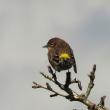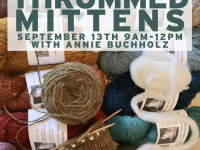Fall migration on Monhegan and the Yellow-rumped Warbler
 Wharf Hill, Monhegan Island. (Photo by Kristen Lindquist)
Wharf Hill, Monhegan Island. (Photo by Kristen Lindquist)
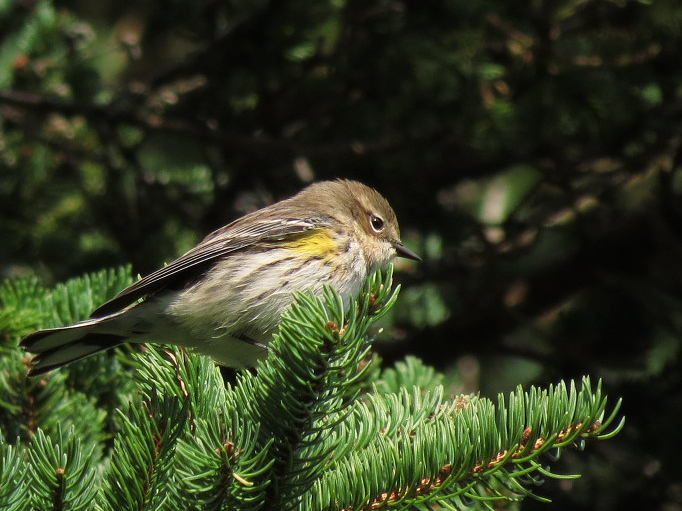 Yellow-rumped Warbler on Monhegan Island, September 2012. (Photo by Brian Willson)
Yellow-rumped Warbler on Monhegan Island, September 2012. (Photo by Brian Willson)
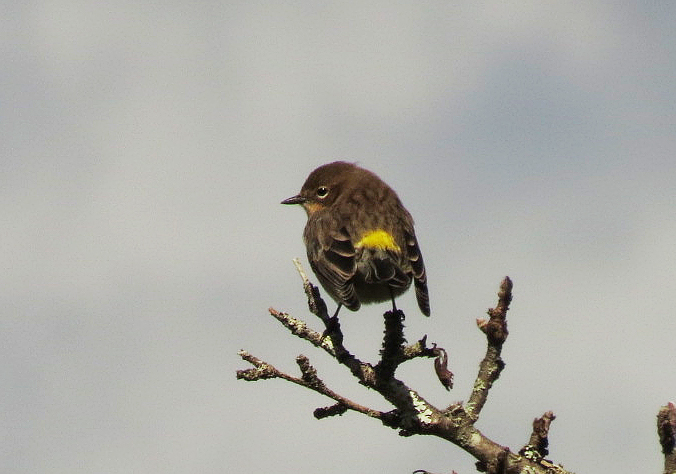 Yellow-rump showing off the reason for its name. (Photo by Brian Willson)
Yellow-rump showing off the reason for its name. (Photo by Brian Willson)
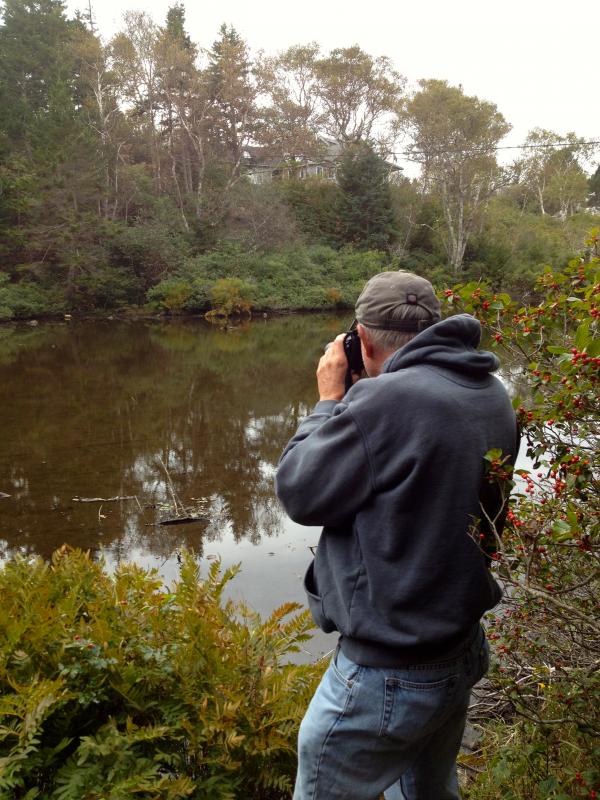 Brian Willson birding at the Ice Pond, an island “hot spot” for migrants (Photo by Kristen Lindquist)
Brian Willson birding at the Ice Pond, an island “hot spot” for migrants (Photo by Kristen Lindquist)
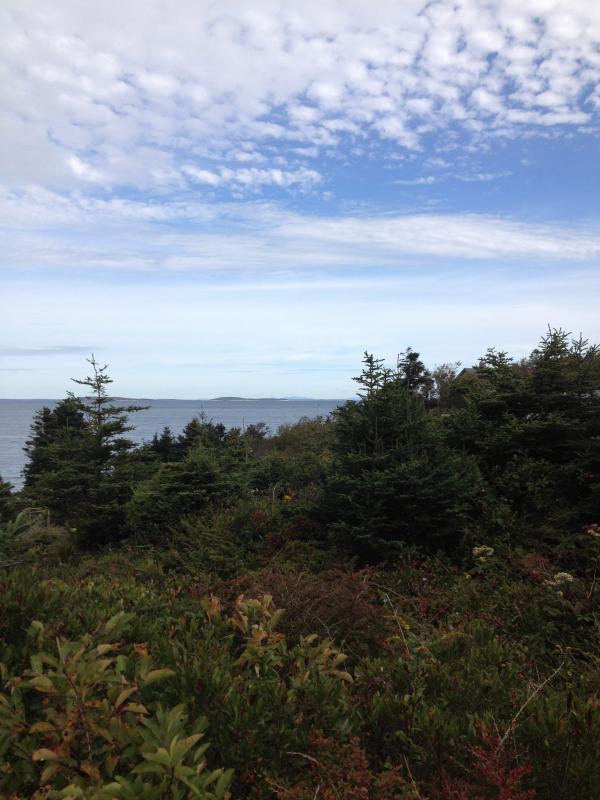 You can’t tell from this photo, but the shrubbery in this view is crawling with yellow-rumps as I prepare to descend into “Yellow-rump Alley”. (Photo by Kristen Lindquist)
You can’t tell from this photo, but the shrubbery in this view is crawling with yellow-rumps as I prepare to descend into “Yellow-rump Alley”. (Photo by Kristen Lindquist)
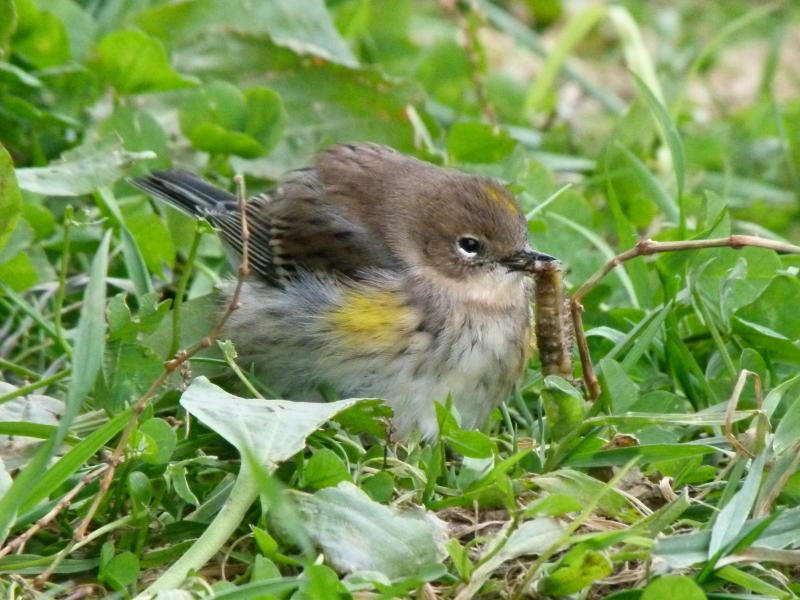 Is this not a cute bird? (Photo by Brian Willson)
Is this not a cute bird? (Photo by Brian Willson)
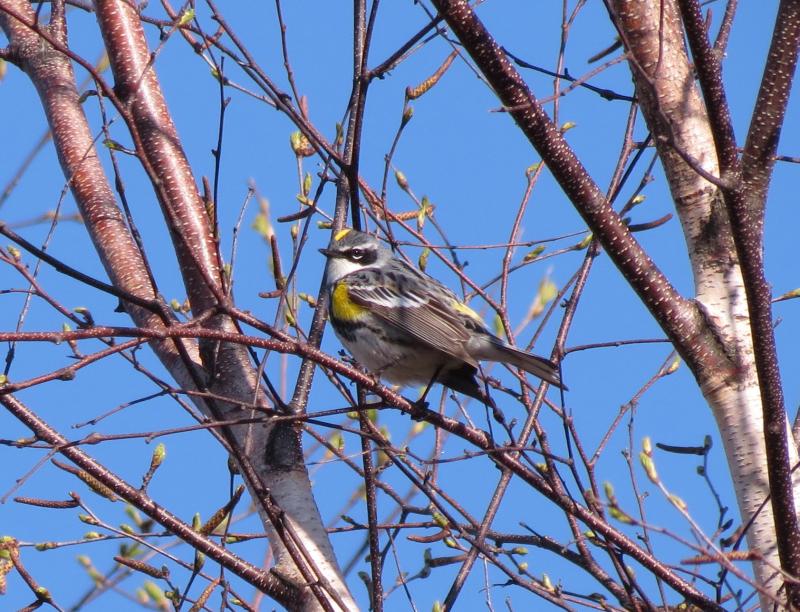 Spring plumage is quite a contrast with the brown plumage of fall birds. (Photo by Brian Willson)
Spring plumage is quite a contrast with the brown plumage of fall birds. (Photo by Brian Willson)
 Wharf Hill, Monhegan Island. (Photo by Kristen Lindquist)
Wharf Hill, Monhegan Island. (Photo by Kristen Lindquist)
 Yellow-rumped Warbler on Monhegan Island, September 2012. (Photo by Brian Willson)
Yellow-rumped Warbler on Monhegan Island, September 2012. (Photo by Brian Willson)
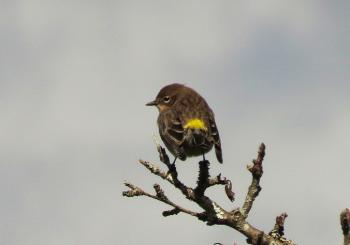 Yellow-rump showing off the reason for its name. (Photo by Brian Willson)
Yellow-rump showing off the reason for its name. (Photo by Brian Willson)
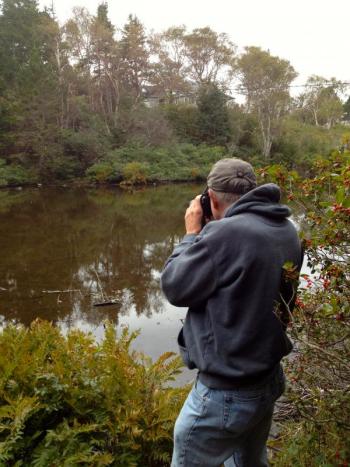 Brian Willson birding at the Ice Pond, an island “hot spot” for migrants (Photo by Kristen Lindquist)
Brian Willson birding at the Ice Pond, an island “hot spot” for migrants (Photo by Kristen Lindquist)
 You can’t tell from this photo, but the shrubbery in this view is crawling with yellow-rumps as I prepare to descend into “Yellow-rump Alley”. (Photo by Kristen Lindquist)
You can’t tell from this photo, but the shrubbery in this view is crawling with yellow-rumps as I prepare to descend into “Yellow-rump Alley”. (Photo by Kristen Lindquist)
 Is this not a cute bird? (Photo by Brian Willson)
Is this not a cute bird? (Photo by Brian Willson)
 Spring plumage is quite a contrast with the brown plumage of fall birds. (Photo by Brian Willson)
Spring plumage is quite a contrast with the brown plumage of fall birds. (Photo by Brian Willson)
A birder friend describes it as "popcorn" — when an active flock of birds is bouncing all around you in the trees like popcorn in a hopper. That's what it was like in the depths of "Yellow-rump Alley," a short, narrow trail winding down a ledge through a tunnel of old apple trees. Yellow-rumped Warblers were everywhere, hopping amid the leaves, chipping, flitting so close sometimes wings ruffled my hair. Dozens of birds everywhere I looked — just another fall morning birding on Monhegan Island!
The only bird that trumped the yellow-rump in numbers was the Red-breasted Nuthatch, which had invaded the island in such numbers that every spruce “beeped” with dozens of this tiny, boreal bird. But the yellow-rump had my attention. In its dull brown fall plumage, this common warbler falls into the group of what birders affectionately refer to as "little brown jobs" or LBJs. It’s also called "butter butt" for its yellow upper rump patch, easily see when it flies or perches back to you. Or in field shorthand, yellow-rump is often abbreviated to just plain "rump," as in, "In this tree I've got 'rump,' 'rump,' 'rump,' chickadee, and oh, there's a Palm Warbler! And… another 'rump.'" Much of the time I recently spent birding on Monhegan was in the company of 'rumps,' which can make for an entertaining overheard exchange between two birders…
Birder One: "What did you see this morning down by the Ice Pond? Did the White-eyed Vireo show up?"
Birder Two: "All I saw was a bunch of 'rumps.'"
Thanks to their numbers and affinity for hanging out in large flocks, yellow-rumps are a gratifying species. When other warblers are scarce, you can almost always count on yellow-rumps still hanging around. The first few days I was out on the island, it was one of only a handful of warblers I even saw (though by trip’s end I’d tallied 19 warblers species). The eastern sub-species, known as "Myrtle Warbler" because wintering flocks will subsist on myrtle berries (bayberries), can be found almost year-round in coastal Maine. Yellow-rumps sporadically congregate throughout the winter on Beech Hill Preserve in Rockport, for example, where bayberry bushes edge the trails and fields.
And the yellow-rump is very cute, scientifically speaking, even in its drab fall plumage. (A spring male, by contrast, is blue-gray with bright black and yellow breast patches, a black eye patch, and a yellow crown.) It's a perky little thing, always on the move, with bright eyes framed by white half-moons. And, like the chickadee, it will often come closer to its observer than most other species, which seems to reflect a certain curiosity, or audacity. So when the birding was slow on Monhegan (relatively speaking, for this birding hot spot), standing amid a flock of yellow-rump popcorn made it worthwhile and enjoyable. I'd hold very still to see how close one would come to me. Or try to count how many birds the flock comprised. Or just appreciate the energy on display before me, contained in all those tiny feathered beings.
Spending long periods of time following flocks of yellow-rumps isn't just a good way to make the best of things on a slow day, either, although there is a certain Zen quality to the activity. It may seem counter-intuitive, but staring at a bunch of 'rumps' is actually a key strategy for birders hoping to see other species. During migration, other warblers and songbirds often travel with flocks of yellow-rumps and chickadees — safety in numbers, after all — so listening for their chip notes and watching for the popcorn can lead to finding more unusual birds. The afore-mentioned White-eyed Vireo, for example, appeared amid the flock of yellow-rumps that had me mesmerized in Yellow-Rump Alley; spotting this southern bird that's a rare Maine visitor became simply a matter of noticing a bird that didn't look or behave like a yellow-rump or chickadee.
Yellow-rumps sporadically congregate throughout the winter on Beech Hill Preserve in Rockport, for example, where bayberry bushes edge the trails and fields.
The highlight bird for me on this past trip was a Golden-Winged Warbler, a declining species that's exciting to see anywhere, let alone in a state where it doesn't even breed. I'd never seen a male golden-wing in bright plumage, so once I heard he was in the vicinity, I became obsessed with seeing him for myself. To do so, I tracked down the flock of yellow-rumps shifting around the Ice Pond and stayed put until eventually, after three attempts and several hours of observation, I picked him out of the flock. So tracking the most common warbler on the island enabled me to find the least common—and left me feeling grateful to both the golden-wing for finally showing himself and to all those yellow-rumps that unwittingly tipped me off as to where he was.
But there's another lesson in all this, too. A few days after I left my island birding idyll, I got an email from my friend Bryan Pfeiffer, of Vermont Bird Tours, who was still out on the island leading a birding group. One of his clients had been paying very close attention indeed to a flock of yellow-rumps on Horn Hill and managed to turn up the real rarity: an Audubon's Warbler, the western sub-species of Yellow-rumped Warbler. This bird, given away by its yellow throat, was way out of its range. How it got here boggles the mind. But the most amazing thing to me was how the photographer managed to pick out that one special yellow-rump out of hundreds. That's the true art of seeing birds, one I'm still working to master. But being able to spend time during fall migration at a birding hotspot like Monhegan enables me to hone my craft a little more each year.
Kristen Lindquist is an amateur naturalist and published poet who works for Coastal Mountains Land Trust in her hometown of Camden.
Event Date
Address
United States










